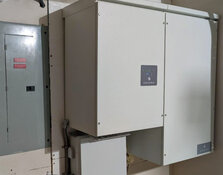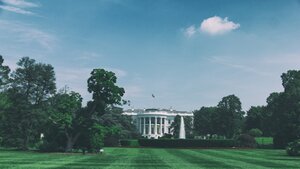Edward Guinness: The origins of Guinness Atkinson go back to the early 1990s when Tim Guinness and Jim Atkinson set up the U.S. division of Guinness Flight Asset Management. After Guinness Flight had been sold to Investec, Tim and Jim were able to buy the U.S. business in 2003 and called it Guinness Atkinson Asset Management. At that time, Guinness Atkinson had around $100 million under management. We have since grown that to around $500 million, and we have launched three additional funds, two of which are in the energy space.
We run a conventional energy fund, the Guinness Atkinson Global Energy Fund, and the Guinness Atkinson Alternative Energy Fund. We have been running funds with our conventional energy strategy since 1998. The average annualized return, even though we have had such terrible markets recently, is still around 16%. Within that we had been looking at the alternative energy space, but we had only ever made one investment in an alternative energy stock.
Tim decided that the alternative energy industry had reached the size where there was a big enough universe for us to form a separate fund, and that it merited a separate fund because the long-term dynamics of the industry are highly attractive and are different from those of the conventional energy space.
In March 2006, with Matthew Page and myself as co-managers, we launched the Guinness Atkinson Alternative Energy Fund. We had very good success in the first two years; we built the fund up to $150 million under management. We're now back to around $45 million under management. I feel the sector and the fund have been through quite a rough period, but we're getting to a point where concerns about the economy are built into stock prices, and absolute valuations in terms of price multiples are very low. We're pretty excited about the next 18 months for the fund.
TER: You launched the Guinness Atkinson Alternative Energy Fund in 2006 for U.S. investors. Then you launched the Guinness Alternative Energy Fund in 2007 for non-U.S. investors. Do you think European investors' appetites for alternative energy exceed those of U.S. investors? If so, what do you think accounts for that?
EG: I think European investors generally have a greater understanding and enthusiasm for the sector. That's based on the fact that in Europe there is much greater visibility of the actual technology in terms of the huge number of wind and solar projects and the returns that are being generated by those projects.
At the same time, I think investors in Europe are more cautious on investing in funds, whereas American investors are much more sophisticated in recognizing the benefits funds bring to an area like this.
TER: That's noteworthy. So with American investors and alternative energy, is it a case of "out of sight, out of mind?"
EG: Perhaps. I think people in the U.S. are more concerned about the broad market, and if people are worried about the broad market, alternative energy is another area that they're worried about. I don't think investors have returned to thinking this is an area that is actually going to outperform even if the economy goes sideways, which is what I think will be the case.
TER: You see alternative energy as something of a hedge against the broad market?
EG: I wouldn't describe it as a hedge, but I think it's something that over the next 5 to 10 years can do well even if the broad market doesn't. You might say that's a hedge, but it's not in the sense that it should perform very well if the broad market actually goes up.
TER: All right, let's play devil's advocate for a moment. A recent Guinness Atkinson research report said, "Oil is fine, but running out; yet demand for energy is rising. We have to find alternatives that will be affordable and secure." But the world's proven oil reserves stand at 1.3 trillion barrels or enough to last 80 years at current consumption rates. It's also thought that the industry will discover at least half of those reserves or more during the next 80 years. Are we getting ahead of ourselves when it comes to short- and long-term demand for alternative energy versus fossil fuels?
EG: I think the question as posed is not looking at the whole picture. I think that the other piece is that the oil still in reserve is becoming more and more expensive to extract. If we pay enough, we will keep finding oil for hundreds of years because clearly that would subsidize more and more advanced extraction techniques. What that means is that prices are going to rise over the next 10 to 20 years. Even if you look at extraction from the oil sands, my understanding of the cost of production there is $50–$60 a barrel. For natural gas, there's been a huge enthusiasm about shale gas, but the marginal cost of production there is not at $4 per thousand cubic feet (MCF), which is where the current gas price is. I understand that it's more like $6 or $7 per MCF.
I think we are quite weak "peak oil" believers; while the reserves are finite, we don't think we've peaked yet. We're consuming 86 million barrels a day today; we think that in the next 15 years consumption is going to go to 100 million barrels a day. We think that demand will be met, albeit at higher prices. Actually, our view on demand is that it's going to be even stronger than that based on the strength of Asian demand.
The reason to be enthusiastic about alternative energy is because of the rising costs for fossil fuels, rather than the idea that next Thursday we're suddenly going to run out. The flipside for the alternative energy industry is that you have technologies that are still falling in costs.
TER: But nonetheless, prices for alternative energy remain comparatively high at the moment, if you were to average the various forms.
EG: That is a fairly common myth. If you look at the core technologies that are deployed today of hydro, biomass and geothermal, sources of alternative energy are competitive with coal, nuclear and natural gas on a price basis. And the cost of wind can be as low as $0.05 a kilowatt-hour on good sites, which is broadly competitive, provided that the wind supply remains below 25%–30% of the mix, and we're nowhere near that yet. Solar is clearly a lot more expensive, but it's getting considerably closer. The path for solar to reach a point where it becomes quite a viable distributive source of electricity without significant subsidies is within our grasp.
Germany has put the most effort toward getting it there, and they do have high electricity prices. The electricity prices in Germany are north of $0.30 per kilowatt hour, and the feed-in tariffs that they are now paying to the solar providers are only just above that. The tariffs will fall through those levels in the 2011–2012 timeframe..
TER: So Germany's taken the approach that "it's expensive now but will only get cheaper, and it's sustainable." Is that correct?
EG: The way the German industry works is that if you install a solar panel, you get a guaranteed price for the electricity that it generates, which is actually not subsidized by the government. It is subsidized by the energy consumers and the cost is passed across all users. The additional uplift to people's bills to pay for that is between $2–$3 a month per household—that's not a crazy amount in the vast scheme of things. The government does not fund this, so it doesn't weigh on government finances. We're not worried that that's going to be one of the first schemes to be cut, although we do expect the tariff declines to continue as planned.
Once you start to have a feed-in tariff that is below the retail electricity price, you will then start to lower the blended cost of electricity as you get more and more solar panels installed.
TER: In America, some states have introduced progressive legislation to encourage the adoption of different forms of alternative energy. Do you believe that the United States needs a broad alternative energy plan akin to what Germany has introduced?
EG: Clearly, the German policies have effectively resulted in a high level of installation; so to a point, yes. I think the U.S. at the moment is a market that shows huge potential in the solar space that it is struggling to fulfill. The main areas being worked on in the U.S. are utility scale projects. Such projects have been a struggle with the weak economy, because the price that the large utilities are prepared to pay for power purchase agreements (PPAs) is low. That also relates to low natural gas prices. But the cost the people are paying in the U.S. is still 20%–30% higher than what people are now paying in Germany for fully installed projects. There's huge fat yet to come out.
We are optimistic that the U.S. is a bit like a large ocean liner, and that once it gets pointed in the right direction and gets going, it will build up a huge head of steam.
On the wind side, the U.S. had a market-leading position four to five years ago, albeit with jerky levels of installation. Every other year the government would introduce a two-year extension to the subsidy program. You would have one year of massive construction, and then everyone would put away their tools for a year, which was pretty unhelpful.
China has overtaken the U.S. as the world's leading installer of wind turbines. Our understanding is that the prices that the utilities are prepared to pay for PPAs means that lots of wind projects in the U.S. are now on hold. And we're looking for that market to be a smaller market in 2010 than it was in 2009, which is something we'd like to see addressed because it's not a very long-term view on things.
TER: You mentioned China. What impact is China having on alternative energy?
EG: It's been reasonably popular to paint China as the bad guy of change in the last five or six years, and I am not convinced that that is entirely warranted. While they are still building new coal plants because they have to, they have some of the most progressive policies—aggressive policies as well as progressive—for putting new wind and hydro plants in place.
They have been supportive of the solar industry in terms of expanding the manufacturing base, which has been a key driver in getting costs down. The cost of solar modules has fallen by over 50% in the last two years.
They're also looking at putting in place tariffs that would encourage the installation of solar photovoltaic (PV) in China. I think they've identified the industry as a real core growth sector in which they can be key players on a global basis. About 25% of our portfolio consists of Chinese companies. And those are Chinese companies that typically have their listings elsewhere.
That's a sign that this industry is moving to a much more commoditized level where the ability to manufacture at low costs is what's most important. The Chinese are doing the same in the wind industry, although they're probably five years behind where they are in the solar industry.
TER: In your fund's portfolio, 17 of the 36 companies are solar energy companies. Why is there such a heavy weighting toward solar?
EG: First, we are unusually positive on the solar sector. Industry analysts were expecting this year to be a terrible year for the solar industry. Actually, it looks like the industry is going to have grown from around 7 gigawatts (GW) last year to somewhere in the 13–14 GW range this year. The industry's size has doubled. This means that companies have been able to operate plants at full capacity or above, which has been hugely positive for margins.
People are very worried about demand next year. But what we're seeing from the core players is that these companies are managing to sell out 2011 demand because the companies doing the major installations have good project pipelines on which they can make decent internal rates of return (IRRs). They are planning on pushing ahead with those.
Here is another thing to think about. Solar is mostly a utility product now, but as the costs come down, it's going to be much more of a residential offering. Residential solar in Germany now accounts for 70%–80% of all sales. I think that the mobile phone industry will at some stage prove to be an interesting parallel because people are talking about residential solar in the U.S. being a very niche product. You see some new developments with the installation. But once the costs come down to a point where people can generate $0.10–$0.15 per kilowatt hour and receive financing so that they're not actually carrying all the up-front costs, I think you will start to see the dynamics of the industry in the U.S. change dramatically.
It's hard to say how quickly it will develop, but at the right price, a large percentage of the households in the U.S. will have solar.
We're really excited about the solar space. We think the evaluations are hugely attractive, and solar is the space that has the most potential to grow. It's the area where we're most likely to catch some 9- or 10-baggers within the portfolio.
TER: What are some of those companies that you believe could actually increase 9 or 10 times?
EG: I would pay attention to Yingli Green Energy Holding Co. Ltd. (NYSE:YGE). Then there's Trina Solar Ltd. (NYSE:TSL). Trina and Yingli are, I'd say, top-tier Chinese module manufacturers. They are both getting good brand positioning, as well as good brand awareness in European markets.
I would also look at LDK Solar Co Ltd. (NYSE:LDK) and Renesola Ltd. (NYSE:SOL; AIM:SOLA). These are two companies that have been hugely punished for being highly leveraged. But as things turn around, that leverage becomes a huge plus in terms of the potential returns.
Both of them are low-cost wafer manufacturers, which is part of the manufacturing process for making solar panels. They are cost leaders in that specific space, which is actually starting to experience something of a bottleneck.
TER: How about some other alternative energy ideas?
EG: Two other companies are in a completely different area that highlights another interest we have. We have holdings in companies called WaterFurnace Renewable Energy, Inc. (TSX:WFI) and LSB Industries, Inc. (NYSE:LXU), both of which are leading manufacturers of ground source heat pumps. Those are two stocks we hold in the efficiency sector.
What I am really excited about is that when we start to see a pickup in U.S. housing starts, I think they will be primary beneficiaries. It seems like every new development has a major focus on energy, and ground source heat pumps are the most cost-effective way of improving the energy consumption of a development. We think they'll become, if not required by government, de rigueur among developers. Both those companies have performed really well through what have been extremely difficult times, which shows the recognition for those products and how strong the demand is.
TER: Why do you only have two geothermal companies in your fund's portfolio?
EG: In terms of geothermal, I would love to have more in geothermal because I am a huge geothermal enthusiast. However, the number of listed companies in the space is very short, and some of them are lower-quality companies where we might have some concerns. And a number of companies in this space have been trading at very, very high multiples, which we haven't liked.
Take Ormat Technologies Inc. (NYSE:ORA), which is one of our holdings. I would describe them as the Google Inc. of the geothermal space. They're the ones with lower-temperature geothermal sites, which I think will be key to the growth of the sector. They do installation and they've built a huge portfolio of plants, which they're not getting full value for in the market. I would love to find more companies like Ormat that we could hold at the same sort of valuation, but there just aren't the opportunities out there.
TER: One of your holdings in the Guinness Alternative Energy Fund is First Solar Inc. (NYSE:FSLR), which is ranked seventh on Fortune Magazine's list of the world's fastest growing companies. Tell us about that one.
EG: We try to have the 30 best ideas in our portfolio, and it is one of those ideas. First Solar is the world's leading thin film manufacturer. They have a cost advantage on a dollars-per-watt basis for installing solar, which makes them very, very attractive for large-scale utility projects. Notwithstanding that, they have a low efficiency cell, so if you're looking to get the most energy from your roof, they're not the best way to go about it. If space is not a constraint, they are definitely on the list of people that will be considered for any project.
The shares are actually expensive compared with other stocks we have in the solar space, probably because of their product differentiation and strong management team. First Solar's management has promised quite aggressive targets and has over-delivered on those targets. We think very highly of the company, notwithstanding the fact that its multiples are in the high teens on an earnings basis. It is very well placed to be one of the leaders over the next 5 to 10 years.
TER: Yes, but its Q210 results were $1.84 per share, down from $2.14 per in Q209 and $2.00 per share in Q110. Those results were based on lower margins for their panels. To me, that suggests that there is growing competition and it has forced them to lower prices. Is that a threat?
EG: It is a threat, but to put it in perspective, I think they're at around $0.80–$0.90 cost per watt for manufacturing panels today. The best-in-class solar companies in the PV space in China are hoping to get to $0.80 a watt in about two year's time. I understand that the road map for solar takes them down to the $0.50–$0.60 level. We're reasonably optimistic that they are going to be able to maintain their advantage.
Clearly, margins are a little bit tighter. They now have price competition coming from panels that are much closer to their price point, but they are still below the general PV module price point.
They're expanding the business into what I describe as higher quality earnings. They have a very good pipeline of projects that they are developing. While the margins in those projects are lower, they will enable First Solar to keep growing the core business and position the company for growth.
You have to think about the margins not just in terms of them being squeezed, but also the fact that their margins are going to be higher quality. By higher quality, I mean margins that can't be eroded because they're direct cash flows from projects.
TER: What's First Solar's share price upside?
EG: That's a stock where I'm hoping to make maybe two to three times my money over the next three to five years. It has a $12 billion market cap. I think turning it into a $30 billion company is quite doable, but also quite a challenge.
TER: Do you have some final thoughts on the alternative energy sector?
EG: Yes, I think people should be looking to make the alternative energy sector a small part of their portfolio that is focused on growth. Clearly, alternative energy is still at an early stage, but I really want investors to be clear that this is not a technology play. You are investing in companies with real revenues and real earnings. And you're not relying on huge changes in technology for the industry to grow.
We're only at the foothills today. I mean if the wind industry continues growing at 20% per year, which has been its growth rate for the last 10 years, we would only get to 10% of the world's electricity generation by 2023. And the solar industry, which has been growing around 30% a year for the last 10 years, would only get to around 5% of world electricity from solar by 2023. At that point, I think investors will have seen substantial returns on their investments in this space.
TER: Many thanks, Edward. We appreciate your time.
Edward Guinness joined Guinness Asset Management in 2006. Mr. Guinness is co-manager of the Guinness Atkinson Alternative Energy Fund. Prior to Guinness Atkinson Asset Management, Mr. Guinness worked for HSBC in corporate finance beginning in 1998, and then in 2002 joined Tiedemann Investment Group, New York, in merger arbitrage. Mr. Guinness graduated from Magdalene College, University of Cambridge, with a Master's degree in Engineering and Management Studies in 1998.
Want to read more exclusive Energy Report interviews like this? Sign up for our free e-newsletter, and you'll learn when new articles have been published. To see a list of recent interviews with industry analysts and commentators, visit our Expert Insights page.
DISCLOSURE:
1) Brian Sylvester of The Energy Report conducted this interview. He personally and/or his family own shares of the following companies mentioned in this interview: None.
2) The following companies mentioned in the interview are sponsors of The Energy Report: None.
3) Edward Guinness: I personally and/or my family own shares of the following companies mentioned in this interview: None. I personally and/or my family am paid by the following companies mentioned in this interview: None. I am invested directly in one of our alternative energy funds.








































